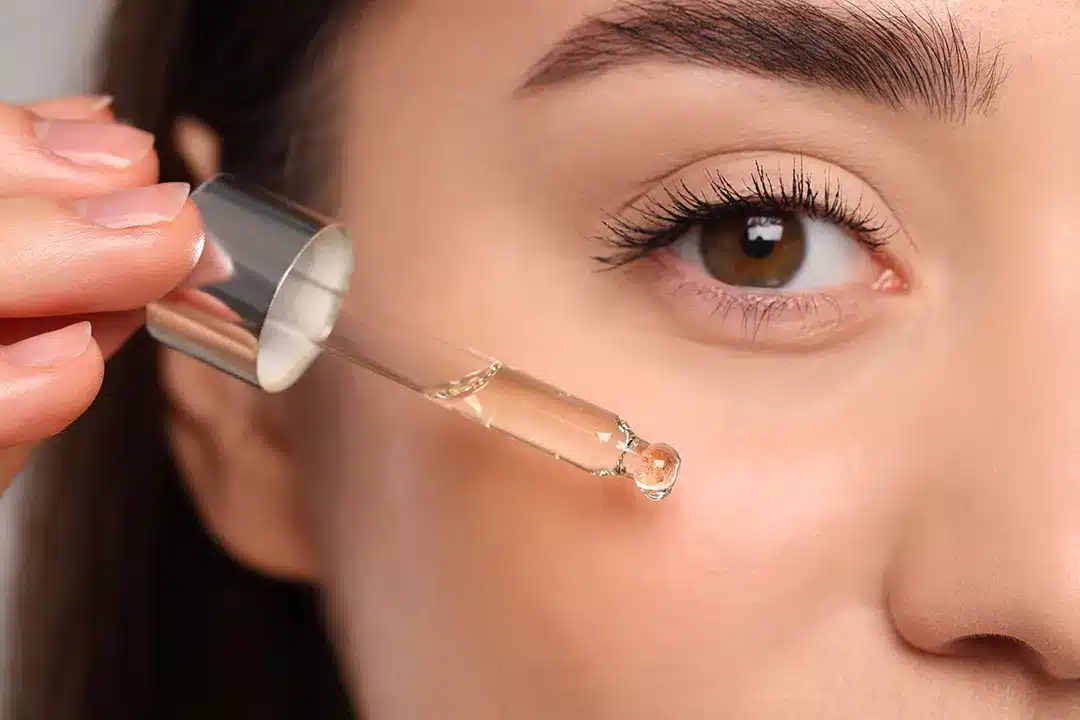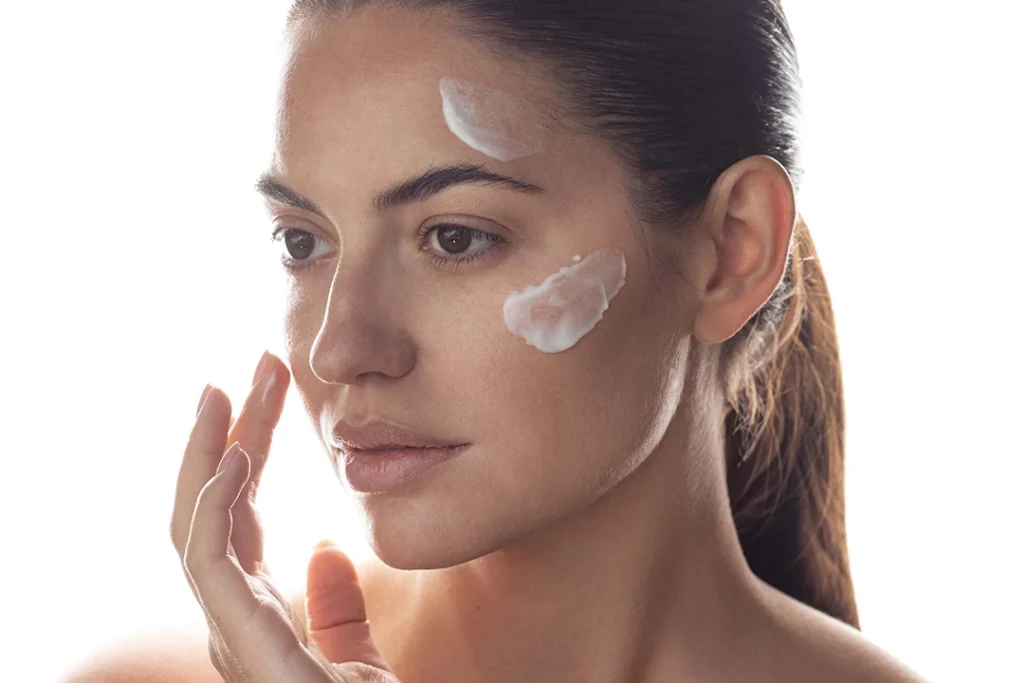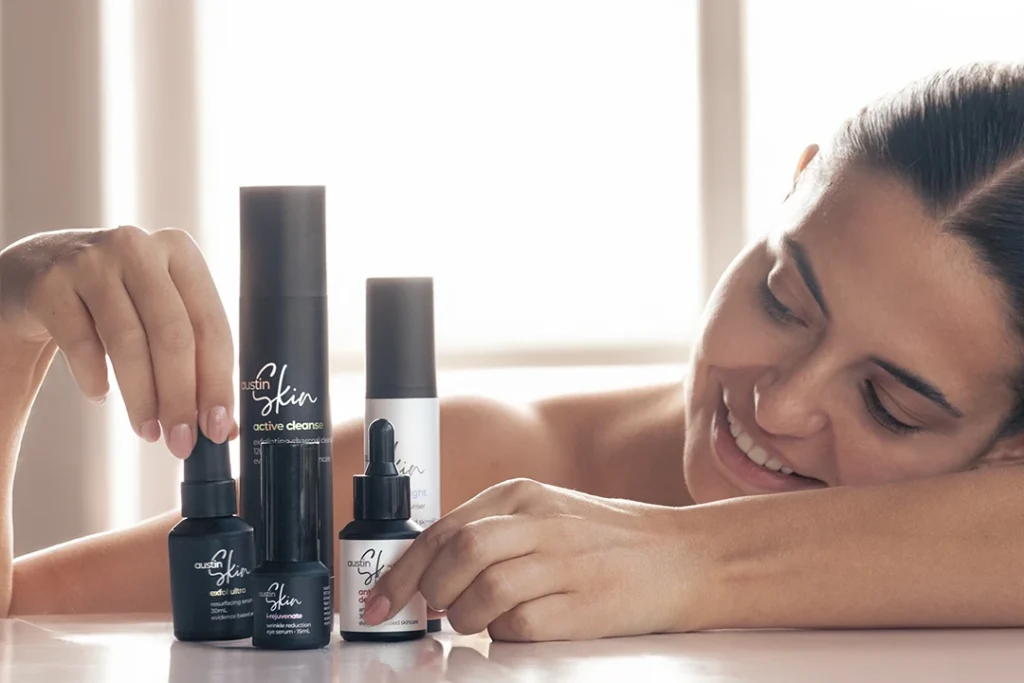Taking the Guesswork Out of Skincare with Austin and NICNAS
The skincare team at Austin Clinic takes pride in the comprehensive knowledge of skin health they have earned through years of ongoing study and experience. This enables them to guide patients towards products and ingredients that provide the two holy grails of skincare: health and beauty. Dr Austin says, “Our goal, as always, is to help ensure your daily routine promotes skin beauty and health.”
Cosmetics sold in Australia, whether they are manufactured here or abroad, are regulated by the National Industrial Chemicals Notification and Assessment Scheme (NICNAS). NICNAS is charged with determining the safety of new chemicals in products, including skincare. By law, a full list of ingredients must be visible to the consumer, but the information may be hard to interpret.
Concern arises because many chemicals used in skincare products are dangerous in high concentrations. They can cause allergic reactions, but there is more to the problem than that. “It’s especially important to avoid ingredients that are known to be irritants, allergens, or carcinogens,” observes Dr Austin. She notes that all products sold at the Austin Skin Store contain ingredients that have been evaluated for safety and efficacy. “Every product listing includes every ingredient that product contains,” reports Dr Austin.
Let’s take a closer look at some ingredients that promise beautiful skin but deliver the opposite. They give skincare a bad name. “We need to examine the toxins and plastics that are part of our cosmetic consumption and understand the impact they have on the environment,” says Dr Austin. ‘That knowledge will enable us to do better and to stop bleaching coral reefs, displacing hundreds of species from their habitats, and generating a tremendous amount of waste.”
We encourage you to avoid these skin saboteurs/environmental pests at all costs, or your complexion AND the environment may end up paying dearly.
Finding Fault with Fillers in Facial Care
The word filler is commonly used to talk about the product that is injected into skin to help plump it up. We are talking about a different kind of filler here. “A filler is a component of a cosmetic formula that is any inert ingredient used to create bulk, texture or lubrication,” reports TruthinAgeing.com.
Common fillers include stabilisers, solvents, and petroleum. They do not make a product perform better, but they may improve the way it feels on your skin. “It is not worth the short-term feel-good you get from filler ingredients to expose your skin to their long-term negative effects,” says Dr Austin.
Sodium Lauryl Sulphate Proves You Can Be TOO Clean
Sodium lauryl sulphate (SLS, sometimes mis-abbreviated as SLAS) is an ingredient commonly found in facial cleansers that acts as a detergent and surfactant (chemical compounds that decrease surface tension between two liquids.) SLS is an effective foaming agent too. “This makes SLS popular with consumers who feel the bubbling action is a sign of cleansing,” says Dr Austin.
The problem is that SLS can also be irritating to the skin, especially for people with sensitive skin, as it works by stripping the skin of its natural oils. This can lead to dryness, itching, and redness. SLS can also disrupt the skin’s natural pH balance, which can make it more susceptible to irritation and infection. “There is also evidence that SLS has a negative impact on eczema, dermatitis, acne, rosacea, and psoriasis,” reports Dr Austin.
Instead, look for SLES (Sodium Laureth Sulphate). It is derived from SLS through the addition of ethylene oxide in a process called ethoxylation. This process makes it much kinder to the skin. Unlike SLS, SLES doesn’t aggravate the scalp or strip it of excess moisture.
Unless You’re Barbie, Avoid Phthalates in Skincare
Phthalates are a group of chemicals used to make plastics more flexible and durable. It also pops up in personal care products. These chemical ingredients can be extremely problematic for people with sensitive skin. “Even individuals whose skin is normally untroubled, may experience irritation, dermatitis, eczema, or acne when they use products with phthalates,” advises Dr Austin.
Phthalates affect more than skin health. They can enter the body through dermal absorption. Once inside the body, they can mimic the effects of hormones, which can disrupt the endocrine system. This in turn, can lead to hormone imbalances, reproductive problems, and even cancer.
The Stinky Truth about Sweet-Smelling Skincare
For many people, the appealing fragrances of their skincare products are an eagerly anticipated part of their daily routine. Unfortunately, not all scents were created equal. Artificial fragrances are bad for your skin for several reasons. First, an artificial fragrance may contain as many as hundreds of different chemicals, many of which are known to be irritants. These chemicals can cause allergic reactions, redness, itching, burning, and even blisters.
“Artificial fragrances can also disrupt the skin’s natural barrier function,” notes Dr Austin. The skin barrier is responsible for protecting the body from infection and other environmental stressors. “When the skin barrier is disrupted, it can make the skin more vulnerable to irritation, infection, and other problems,” she says.
The Dangers of Artificial Dye in Skincare Products
An artificial dye, sometimes referred to as synthetic dye, is a chemical additive that brings colour to self-tanners … and lots of other products you put on your skin including cosmetics, facial cleansers, and hair care products. The thing that makes synthetic dyes so tricky is that they are composed of many chemicals. “Manufacturers don’t have to list the specific chemicals in the dye, they just have to indicate that the colour is artificial,” explains Dr Austin.
This unnamed, secret ingredient includes problematic chemicals such as lead, arsenic, and chromium. They can clog pores, disrupt your skin’s natural barrier, and irritate skin that isn’t normally sensitive.
Exfoliant Beads – Sinking Your Skin and The Oceans
Exfoliating beads are tiny, round plastic particles frequently found in facial scrubs, body washes, and toothpaste. They are used to physically exfoliate the skin, which means that they remove dead skin cells and reveal the newer, brighter skin underneath. Effective though they may be, these little beads lead to big problems. Exfoliating beads can cause microtears in the skin, which can lead to redness, inflammation, and infection. Exfoliating beads can also get stuck in pores and clog them, which can lead to breakouts and blackheads.
“Exfoliating beads are just as hard on the environment,” says Dr Austin. “The non-biodegradable material can never be broken down and ends up in our waterways and oceans. It is harmful to marine life and detrimental to the long-term survival of the planet.”
The good news is that many countries are moving to ban or at least restrict the use of plastic exfoliating beads in personal care products. The other good news is that Austin Clinic is waiting to help you create a bespoke skincare program with products you can trust, made with ingredients you’ll love. Contact us today to ask a question, order a product, or book an appointment.




